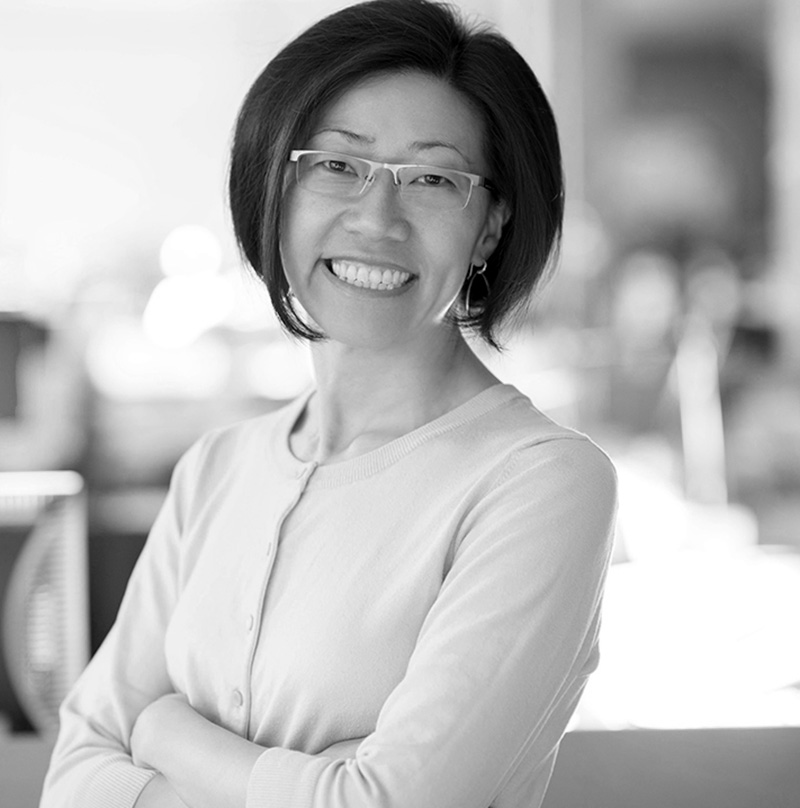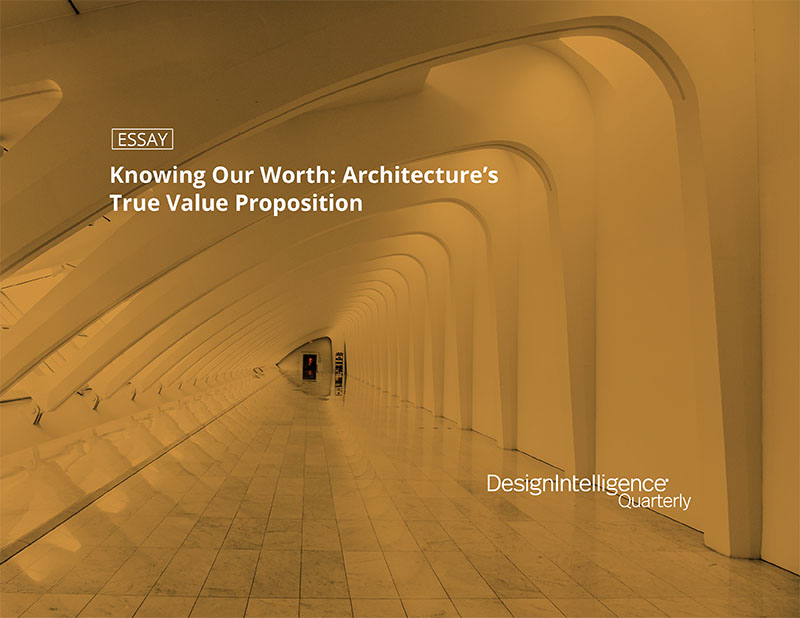Knowing Our Worth: Architecture’s True Value Proposition
by Rosa T. Sheng
AIA, Principal, Smith Group, and
Founder, Equity by Design
October 6, 2021
Building value and challenging conventional wisdom with actionable solutions
In architecture and the built environment we design, there is a compelling and timeless truth about how our work as architects impacts how people feel. We feel great pride and a sense of ownership of the design and its outcome. And we feel saddened after the project’s completion — when we realize that regardless of our attachment to our creation, that it’s technically not “ours” after all. Unfortunately, we try again and again to recapture the feeling, often times forgetting business sense or valuing our own self-worth.
“I’ve learned that people will forget what you said, people will forget what you did, but people will never forget how you made them feel.” —Maya Angelou
Let’s face it. We spend long hours iterating and developing solutions that play a veritable chess game of “what if” in order to get the “best” outcome. While working within the constraints of program scope, budget and schedule, we grapple with a micro level of day-to-day decisions. There are details that may be very important at the time, but lack a greater sense of the importance of time itself. Yet when the project is complete, after the complex challenges of construction administration, escalating costs, change orders, and unanticipated delays, we lose track of the hours that we toiled — often as unpaid overtime. We ignore the devaluation of our own human capital as we throw in more hours as the solution.

This bizarre love triangle of architecture, architect and studio culture has resulted in years of unpaid work for students and emerging professionals to gain access and valid experience in design and construction. It has also resulted in retiring professionals with little savings from a lifelong dedication to their work. Even after achieving licensure, architects continue to earn lower wages than other professions. Although salaries may appear to have more stability that hourly wages, they are compromised without overtime pay and by little or no paid sick time or family leave. Regardless, we are taught by studio culture to be noble artists with great design taking the highest priority over sustainable working conditions or profitability. These core values are often viewed at polar extremes of the spectrum rather than an essential cohesive business model.
In the Equity by Design conversations, we have talked about actionable solutions to the bleak survey results to raise the compensation bar for all architects — and in particular for women and people of color as it relates to advancing equitable practice. In May 2015, AIA San Francisco’s Equity by Design committee, formerly known as The Missing 32% Project, released a full report of its findings from the 2014 Equity in Architecture Survey. The 53-page Equity by Design: Knowledge, Discussion, Action! report, published by AIA San Francisco, begins by reviewing the gender makeup in architecture schools and the profession historically. Women make up 42 percent of graduates from programs accredited by the National Architecture Accrediting Board, but only 28 percent of architectural staff in AIA member–owned firms, 26 percent of licensed architects (who are not principals or partners), and 17 percent of principals and partners.
The low percentage of women in senior roles is attributable in part to architecture’s history as a male-dominated field. In 1969, the ratio of male to female graduates was 20 to 1. Between 2000 and 2011, the number of women in AIA grew from nine to 17 percent. However, women’s gains in educational attainment continue to outpace gains in professional advancement and recognition.
In terms of compensation analysis, among those who provided salary information, the average salary was $79,000, with the bottom 10 percent earning about $40,000, and the top 10 percent earning about $140,000. A wage gap between new male and female hires was observed at every experience level, including those new to the field. Among new hires who had a year or less of experience in architecture, male respondents made, on average, $6,000 more than their female counterparts. These discrepancies between new hires’ salaries are greatest, however, among those with 10-25 years of experience. Within that group, the wide salary gap was partially attributable to men’s greater likelihood of joining a large practice (resulting in an average of $15,000 per year more per year than those in mid-sized firms), and a greater likelihood of being hired into a leadership position (an average increase of $13,000 per year). Even after adjusting for these and other factors, a $15,000 per year wage difference between new male hires and new female hires remained.
When discussing negotiation as a factor influencing low pay and pay disparity, we learned that less than 35 percent of all respondents (both men and women) negotiated for higher salaries when they received an unsatisfactory offer. This not only affects compensation, but our ability to negotiate adequate client fees or additional services and resolve costly change order discrepancies with contractors. How can we become more effective negotiators for ourselves, our firms, and for the architectural profession-at-large? There are many situations and types of negotiation — and ultimately it breaks down to communication styles and the choices we make when we engage in these situations.
And while these statistics may appear bleak, there are several things that we can do to raise the bar and develop a new value proposition for architecture, as well as communicating the value we bring when providing architectural services to clients, stakeholders and society at large.
Know your worth. Improving professional compensation starts here with the AIA Compensation Report & Calculator (or similar). Get a sense of what others are earning at comparable levels and regions.
Improve your worth. Understand what skills sets are valued in your firm, or the firm that you seek to be aligned with in your career path. Research which skills sets are lacking. Set goals to learn these skills, even if you are stretching out of your comfort zone.
Learn strategies to become better negotiators. Practice negotiating with peers beforehand to get feedback on your communication style and observe the other person’s possible reactions to your request. Overcome the bias that asking for more money is a bad thing.
Build strong client relationships based on trust, engagement and integrity. Trust is the foundation of any client / architect relationship. Your success and value relies on your ability to maintain trust in any situation.
Become a Citizen Architect in your local community to champion good design. We often forget that we have a greater role to serve as advocates for better environments. The public is still challenged with understanding what architects do. Becoming the champion will increase your value as a leader and communicate our worth to society.
Rosa is a Designer, Architect, Thought Leader who is known for innovating Architecture with over 26 years experience. She has led a variety of award-winning and internationally acclaimed projects from the aesthetically minimal, highly technical development of the glass structures for Apple’s original high-profile retail stores, Pixar Animation Studios, and notable institutions of higher learning including LEED NC Gold–certified Lorry I. Lokey Graduate School of Business at Mills College, Multiple UC Davis, CSU and Community Colleges to redefine design relevance for student success.
Rosa is Founder of Equity by Design and AIA SF President and has led 3 nationally acclaimed Equity in Architecture Survey research projects, co-authored AIA National Resolution 15-1 in 2015 for Equity in Architecture, and served on the Equity and the Future of Architecture (EQIA) Committee in 2016, ‘17 and ‘18. .
Rosa joined SmithGroup in October 2017 as a Principal in the San Francisco office. She is the Higher Education Studio Leader and Director of Equity, Diversity, Inclusion for interdisciplinary project pursuits that tap her expertise in strategic planning, programming, and project leadership for high performing teams.


